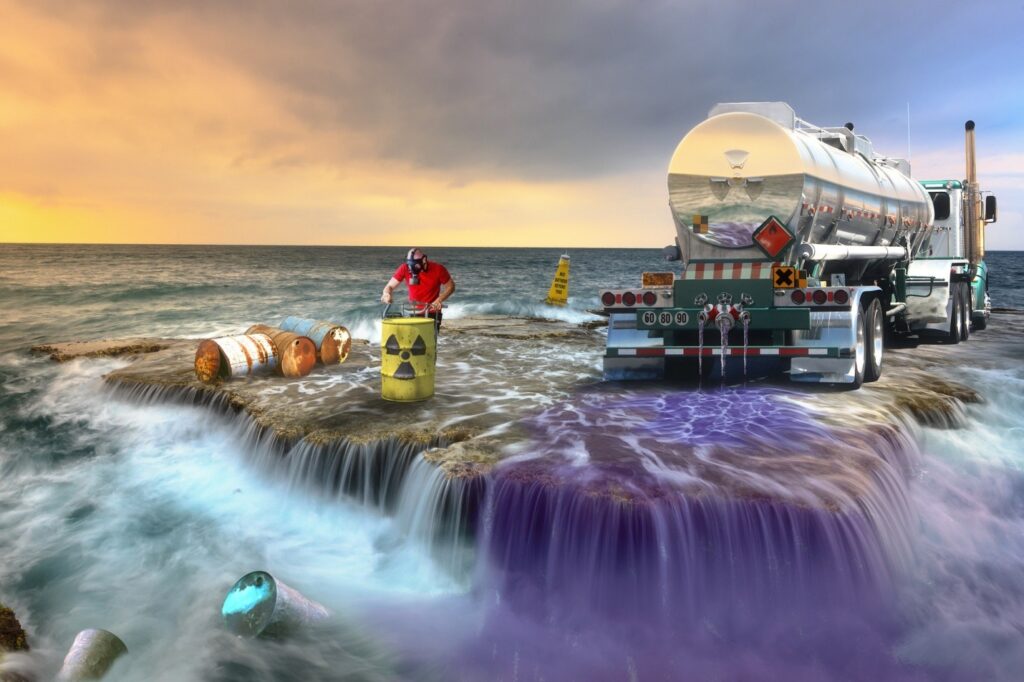The 8-Minute Rule for Reclaim Waste
The 8-Minute Rule for Reclaim Waste
Blog Article
Excitement About Reclaim Waste
Table of ContentsReclaim Waste Things To Know Before You Get ThisThe Best Strategy To Use For Reclaim WasteHow Reclaim Waste can Save You Time, Stress, and Money.Facts About Reclaim Waste RevealedSome Known Details About Reclaim Waste
Discover the types, incidents, and forms of fluid waste. Residential sewer waste refers to the waste and items from a property septic storage tank. This kind of waste is produced by humans in homes, schools, and various other structures. This only includes septic systems that have a drain field. The correct administration and disposal of domestic sewer waste need liquid waste to be transferred to a sewer therapy plant where the appropriate methods and devices are related to purify and get rid of waste.
Commercial waste usually consists of prospective dangers, such as combustible products or a blend of fluid and solid waste items, and requires a more advanced and thorough disposal procedure. The disposal of business waste normally includes the filtration of waste prior to transport to ensure safe and proper disposal. Industrial waste is created from byproducts and overflow of commercial processes and manufacturing.
This sort of waste can not make use of the exact same sewage management transportation or procedures as septic or commercial fluids. The hazardous waste monitoring process needs the evaluation and testing of liquid waste before it goes through the disposal process (liquid waste removal melbourne). Runoff waste is the liquid waste that originates from overflow and excess stormwater in highly inhabited areas or cities
Runoff waste can trigger contamination and flooding if not handled correctly. Making certain correct waste monitoring can protect against calamities and minimize environmental injury.
How Reclaim Waste can Save You Time, Stress, and Money.
Contact PROS Services today to learn more about our waste management and disposal solutions and the correct methods to care for the fluid waste you create.
(https://reclaimwaste1.bandcamp.com/album/reclaim-waste)This so-called 'wastewater' is not just a vital resource yet, after therapy, will certainly be launched to our land, waterways or the sea. Utilized water from commodes, showers, baths, kitchen area sinks, laundries and commercial processes is recognized as wastewater.

water made use of to cool equipment or tidy plant and devices). Stormwater, a type of wastewater, is overflow that moves from agricultural and metropolitan areas such as roofs, parks, yards, roads, paths and rain gutters right into stormwater drains, after rain. Stormwater streams unattended straight to neighborhood creeks or rivers, at some point reaching the ocean.
Unknown Facts About Reclaim Waste
In Queensland, a lot of wastewater is treated at sewage treatment plants. Wastewater is transported from domestic or industrial sites with a system of sewers and pump stations, referred to as sewage reticulation, to a sewer treatment plant. City governments build, preserve and run her explanation most sewage treatment plants. Operators are certified under the Environmental Management Act 1994 to release cured wastewater at an acceptable environmental criterion right into waterways.
The Department of Natural Resources advises regional federal governments about handling, operating and preserving sewerage systems and treatment plants. In unsewered areas, local governments may require homeowners to mount specific or family sewer therapy systems to treat domestic wastewater from commodes, cooking areas, shower rooms and washings. The Division of Natural Resources authorises making use of family systems when they are proven to be efficient.
In some new subdivisions, treatment of some stormwater to get rid of litter, sand and gravel has started using gross toxin traps. Wastewater treatment happens in four phases: Eliminates solid matter.
Wastewater after that moves into large containers where solids resolve and are removed as sludge. Oil and residue are skimmed from the surface area. Uses tiny living microorganisms called micro-organisms to break down and eliminate staying dissolved wastes and fine fragments. Micro-organisms and wastes are included in the sludge. Gets rid of nitrogen and phosphorus nutrients that can create algal flowers in our waterways and intimidate marine life.
The 5-Minute Rule for Reclaim Waste
Nutrient removal is not readily available at all sewage therapy plants because it needs expensive specialist equipment. Clear liquid effluent produced after therapy may still include disease-causing micro-organisms - liquid waste disposal.

Most wastewater streams right into the sewage system. Under the Act, local federal governments provide authorizations and permits for eco relevant activities (Periods) involving wastewater releases that may have a neighborhood effect.
The Definitive Guide for Reclaim Waste
Tracking supplies accurate information regarding water quality and can validate that licence conditions are being fulfilled. The info obtained through tracking gives the basis for making water top quality choices.
Report this page